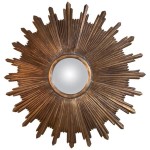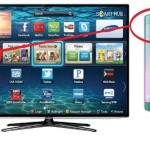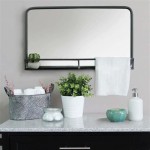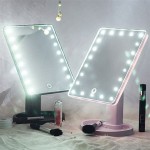Mirror iPhone to Samsung TV Without Internet: A Comprehensive Guide
Mirroring an iPhone screen to a Samsung TV is a useful function for various purposes, including viewing photos and videos, giving presentations, or playing mobile games on a larger display. While many screen mirroring solutions rely on a shared Wi-Fi network, several methods allow mirroring without an internet connection. These offline mirroring techniques provide flexibility and are particularly beneficial in environments where internet access is limited or unavailable.
This article details methods for mirroring an iPhone to a Samsung TV without the need for an active internet connection. The focus is on hardware-based solutions and direct connection methods that bypass the reliance on network infrastructure.
Utilizing an HDMI Adapter
One of the most reliable methods of mirroring an iPhone to a Samsung TV without an internet connection involves using an HDMI adapter. This approach creates a direct, wired connection between the devices, transmitting both video and audio signals. Several types of HDMI adapters are compatible with iPhones, each catering to different iPhone models and port configurations.
The most common type is the Lightning Digital AV Adapter, designed for iPhones with a Lightning port. This adapter features a Lightning connector on one end, which plugs into the iPhone's charging port, and an HDMI port on the other end for connecting to the TV. Additionally, the adapter incorporates a Lightning port for simultaneous charging during mirroring, preventing battery drain.
For older iPhone models with a 30-pin connector, a 30-pin to HDMI adapter is required. While these models are less common, the adapter functions similarly, providing a direct HDMI output from the iPhone. It is important to ensure compatibility with the specific iPhone model when selecting an adapter.
To use an HDMI adapter, follow these steps:
- Connect the HDMI adapter to the iPhone's Lightning or 30-pin port.
- Connect an HDMI cable to the HDMI port on the adapter.
- Connect the other end of the HDMI cable to an HDMI port on the Samsung TV.
- Turn on the Samsung TV and select the corresponding HDMI input source.
- The iPhone's screen should now be mirrored on the TV. Adjust the TV's display settings as needed for optimal viewing.
This method offers a stable and reliable connection, free from the lag or interference that can sometimes occur with wireless mirroring. The image quality is generally excellent, as the HDMI connection supports high-resolution video and audio. The primary drawback is the need for physical cables and the limitation of mobility while mirroring.
The benefits of using an HDMI adapter also includes universal compatibility (almost all TVs have HDMI ports), and it circumvents any security or privacy concerns associated with wireless connections. Since the connection is direct, there's no risk of eavesdropping or unauthorized access. The adapter also usually charges via the Lighting port, offering uninterrupted viewing.
Leveraging a Wired USB-C Connection
Newer iPhone models with a USB-C port can utilize a USB-C to HDMI cable for direct mirroring to a Samsung TV. This approach eliminates the need for an adapter, simplifying the connection process. The USB-C to HDMI cable directly transmits both video and audio signals from the iPhone to the TV.
This method offers a streamlined connection, reducing the number of components required. The connection is generally stable and reliable, providing high-quality video and audio output. The simplicity of the setup makes it a convenient option for users with compatible devices.
To use a USB-C to HDMI cable, follow these steps:
- Connect one end of the USB-C to HDMI cable to the USB-C port on the iPhone.
- Connect the other end of the cable to an HDMI port on the Samsung TV.
- Turn on the Samsung TV and select the corresponding HDMI input source.
- The iPhone's screen should now be mirrored on the TV. Adjust the TV's display settings as needed.
The wired connection provides a secure and reliable mirroring experience, free from reliance on wireless networks. This is particularly useful in situations where network security is a concern or where a stable connection is paramount.
USB-C connections enhance compatibility. They often deliver high-resolution video and audio, and their setup process is simplified. However, same as the Lightning adapter, it inherently limits mobility due to the required physical cable.
Understanding Limitations and Considerations
While these methods provide offline mirroring capabilities, it's important to acknowledge their limitations and considerations. Firstly, the need for physical cables restricts mobility. The iPhone must remain connected to the TV via the HDMI adapter or USB-C to HDMI cable, limiting movement during mirroring.
Secondly, the image quality and resolution may depend on the adapter or cable used. Ensure that the adapter and cable support the desired resolution for optimal viewing. Some adapters may have limitations in terms of supported resolutions or refresh rates.
Thirdly, some apps may restrict screen mirroring due to copyright or licensing restrictions. This is particularly common with streaming services that implement digital rights management (DRM). In such cases, the content may not be displayed on the TV, or a black screen may be shown instead.
Furthermore, the iPhone's battery life may be affected during prolonged mirroring. Consider connecting the iPhone to a power source while mirroring to prevent battery drain. The Lightning Digital AV Adapter includes a Lightning port for simultaneous charging, addressing this concern.
Finally, make sure to check the compatibility of adapters and cables with your specific iPhone and Samsung TV models. While HDMI is a universal standard, some older devices may have compatibility issues. Verify that the adapter or cable is designed for your devices to ensure proper functionality.
It's also worth noting that while these methods bypass the need for an internet connection for the initial mirroring setup, some apps or services may still require internet access for certain features or content. For example, a video playback app may require an internet connection to stream content, even though the screen is being mirrored locally.
In summary, mirroring an iPhone to a Samsung TV without an internet connection is achievable through the use of HDMI adapters or USB-C to HDMI cables. These methods provide a direct, wired connection, offering a stable and reliable mirroring experience. While limitations such as restricted mobility and potential app restrictions exist, these techniques provide a valuable alternative when internet access is unavailable or unreliable. The choice between an HDMI adapter and a USB-C to HDMI cable depends on the iPhone model and the desired level of simplicity. Proper setup and understanding of potential limitations are essential for a successful mirroring experience. Choosing the correct adapter or cable, verifying compatibility, and understanding potential app restrictions will lead to a successful mirroring experience even without access to the internet.

How To Mirror Iphone Tv Without Wifi 2 Easy Ways

6 Free Ways To Mirror Iphone Samsung Tv Without Apple

Screen Mirroring Iphone To Samsung Tv Without Wifi

How To Screen Mirror Iphone Samsung Tv Without Wifi No Chrome Cast Apple 2024

How To Mirror Or Connect Phone Samsung Smart Tv Without Wifi Any App

How To Mirror Iphone Samsung Tv Without Wifi

2024 Guide How To Mirror Phone Tv Without Wifi

How To Stream Iphone Samsung Tv Without Apple

How To Screen Mirror Iphone Samsung Smart Tv

3 Ways To Cast Iphone Tv Without Wifi 2025 Guide







